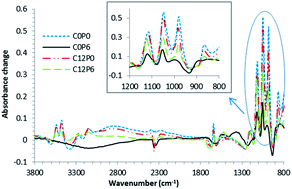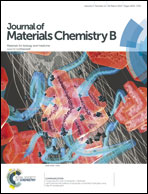Quantifying effects of interactions between polyacrylic acid and chlorhexidine in dicalcium phosphate – forming cements
Abstract
The aim of this study was to assess how varying the ratio of aqueous 0.8 M citric acid : 6 M polyacrylic acid (PAA) (3 : 0, 1 or 3 by weight) affected setting chemistry, mechanical properties and chlorhexidine di-acetate (CHX) release of dicalcium phosphate – forming bone cements. Cement powder included β-tricalcium phosphate (β-TCP) : monocalcium phosphate monohydrate (MCPM) : CHX at 1 : 1 : (0, 0.08 or 0.16) molar ratio. Powder to liquid ratio was fixed at 3 : 1 by weight. Chemical setting kinetics, reactive intermediate formation and final product homogeneity were assessed by ATR FTIR and Raman mapping. Biaxial flexural strength and modulus were determined after 24 hours setting plus 24 hours in water at 37 °C and analysed using Weibull type equations. CHX release from 1 mm thick set discs was assessed over 4 weeks using UV spectroscopy. FTIR demonstrated that CHX interaction with citric acid inhibited formation of the reactive citrate/dicalcium phosphate intermediate complex that enables delay before snap set. High CHX additionally increased strength variability. Upon partial citric acid substitution with higher levels of PAA, delay before cement set was maintained. Monetite instead of brushite, however, was formed in conjuction with more stable polyacrylate complexes. These formulations had much improved strength but also greater modulus. CHX addition and interaction with PAA encouraged greater brushite instead of monetite formation. These complex interactions enabled formulations with high drug and PAA to have improved strength without increase in modulus. They also had low strength variability and better (slower) controlled release of drug. These properties are beneficial for cement use in a range of orthopaedic and dental applications.


 Please wait while we load your content...
Please wait while we load your content...